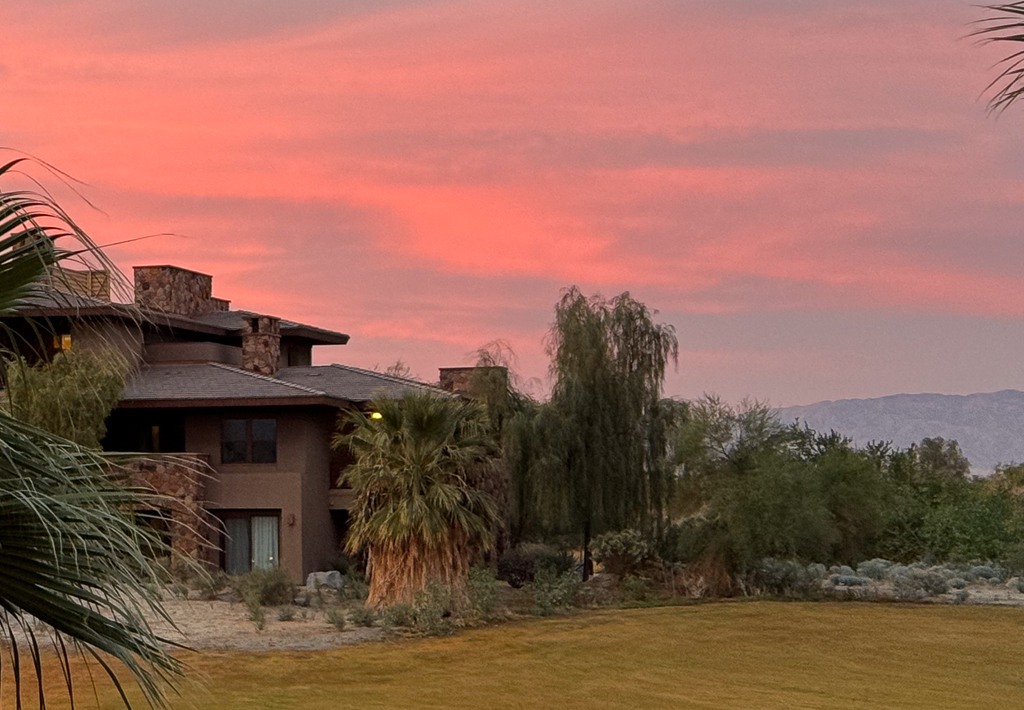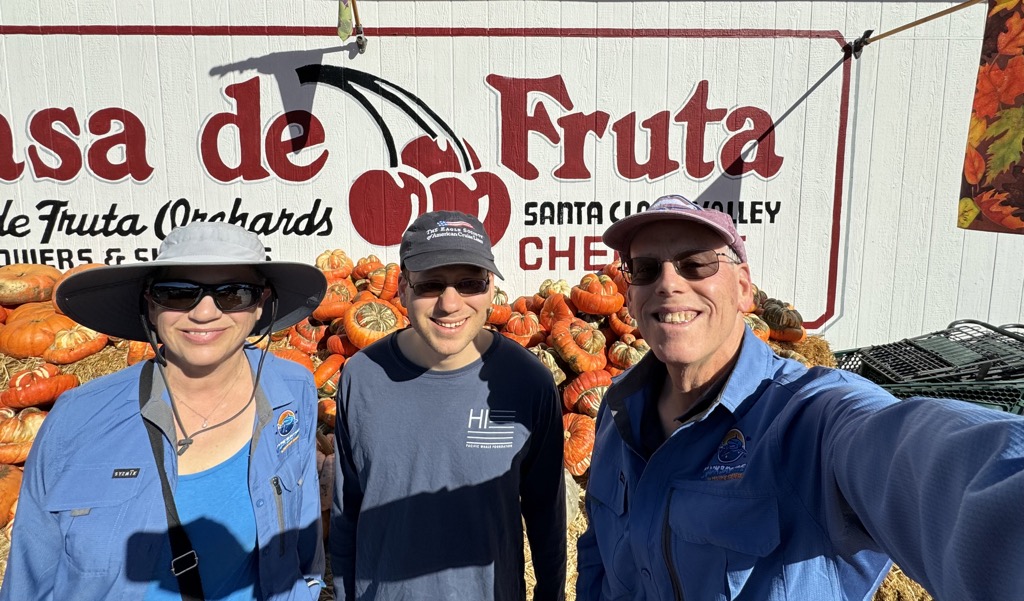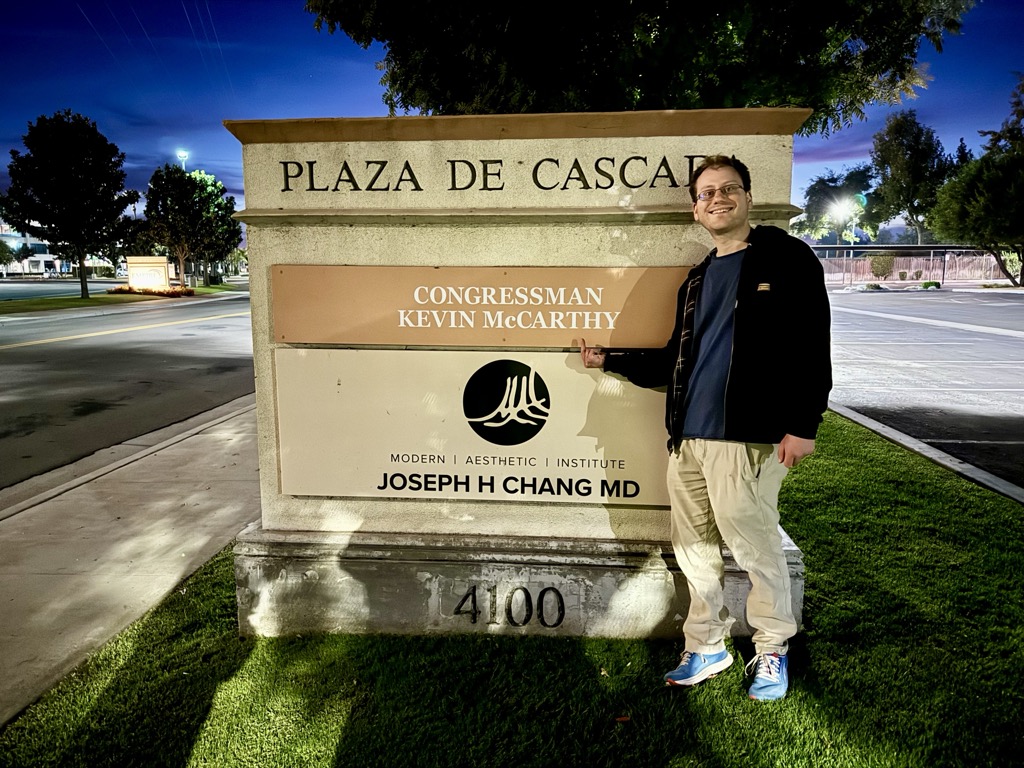We didn’t get a lot of walking in yesterday because we spent most of the day in or around the car, and I was afraid that today would be much the same, so we decided to take a walk around downtown Bakersfield before getting into the car for the drive to Palm Desert and the Westin Desert Willows. We’d seen the neon of the Padre Hotel and the Fox Theatre during last night’s excursion for charging and food, so we asked the concierge for the best walking route to get us there and off we went.
We started by walking west on Truxtun Avenue and turning right (north) on Chester Avenue. Along the way, we passed the Old Church Plaza, which had been the First Baptist Church before being deconsecrated and converted to office space in 1978.
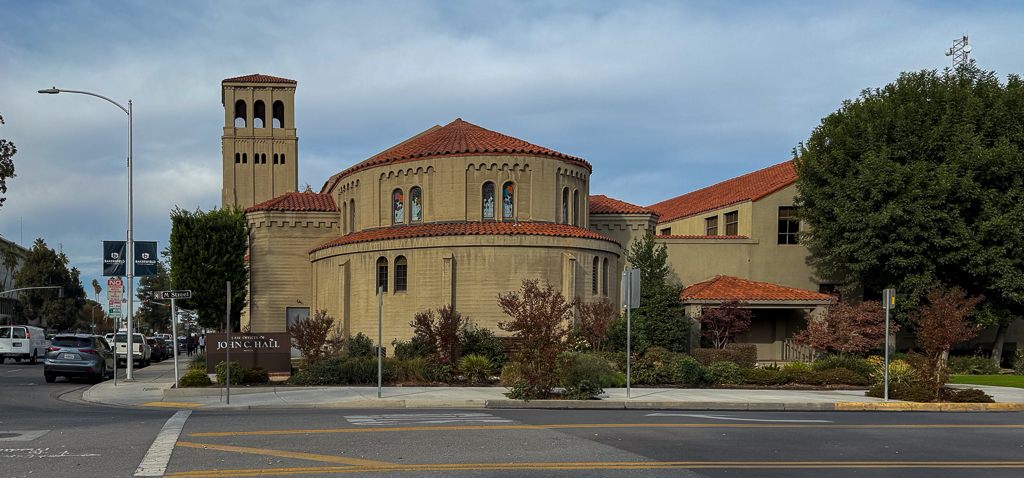
Our next stop was the Kern County Hall of Records, which began its life as a Beaux Arts building, then was “redesigned in the PWA Moderne style” in 1939, and underwent its final modernization in 1988. Despite all the indignities inflicted on it, it was still a striking building.

The next building to catch my eye was the [Haberfelde Building], which dates from 1927 and faces an uncertain future. It’s in the “Sullivanesque” style.

Back in the day, S. H. Kress and Woolworth’s faced each other across 19th Street. Today, the Kress Building houses various offices, and Woolworth’s has been converted into a restaurant (though it’s not currently doing business).
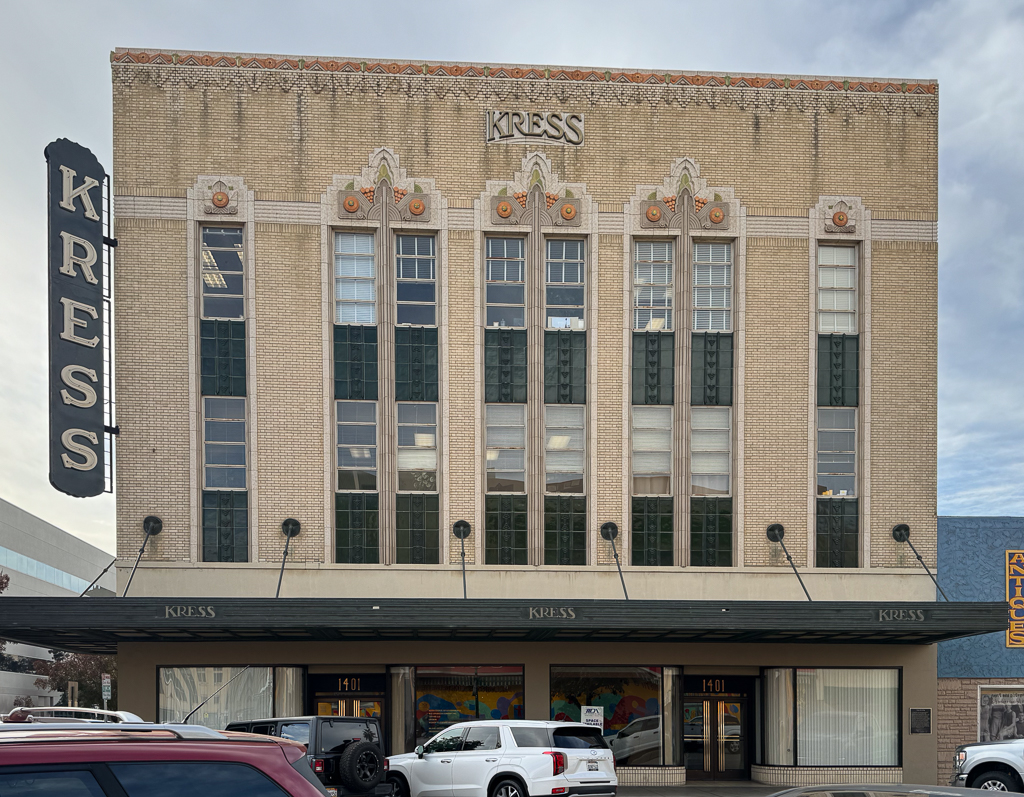
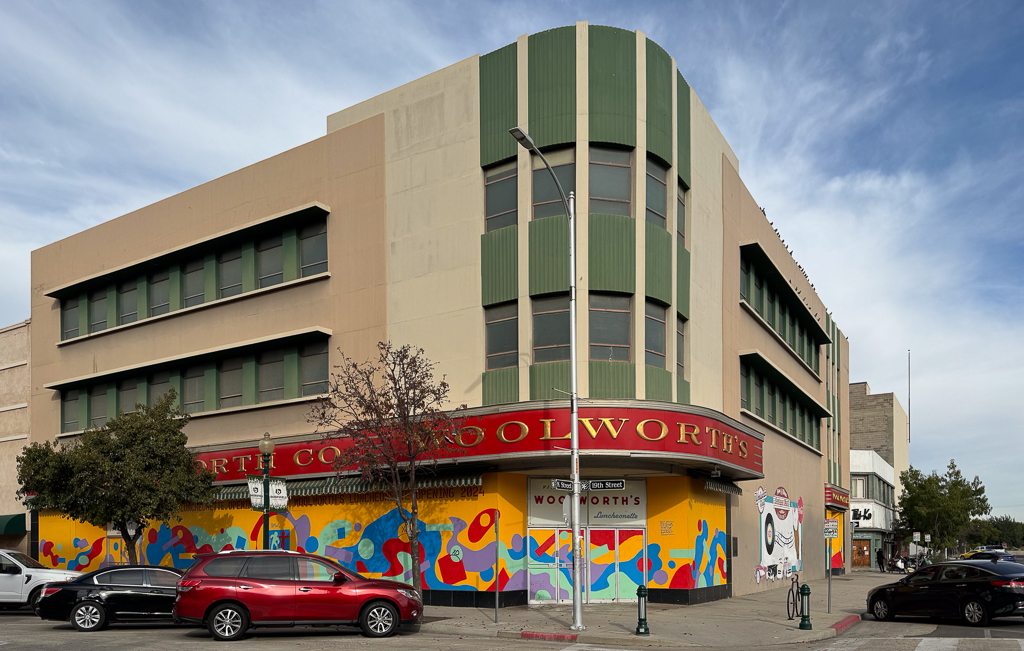
We walked west on 19th Street to H Avenue, where we visited the Historic Bakersfield Fox Theatre, which closed in 1977 but was rescued by the community and is now a performing arts center under the auspices of the Fox Theatre Foundation.

We turned back south and stopped at the Nile Theatre, originally the Bakersfield Opera House. It’s been a church for the past few years, but was just purchased by the Fox Theatre Foundation last month and will become an arts center again.

The Padre Hotel was our next stop; it’s a Spanish Colonial Revival building that was built in 1928, operated until 1999, and was then remodeled and reopened in 2010. It’s an impressive building, inside and out.
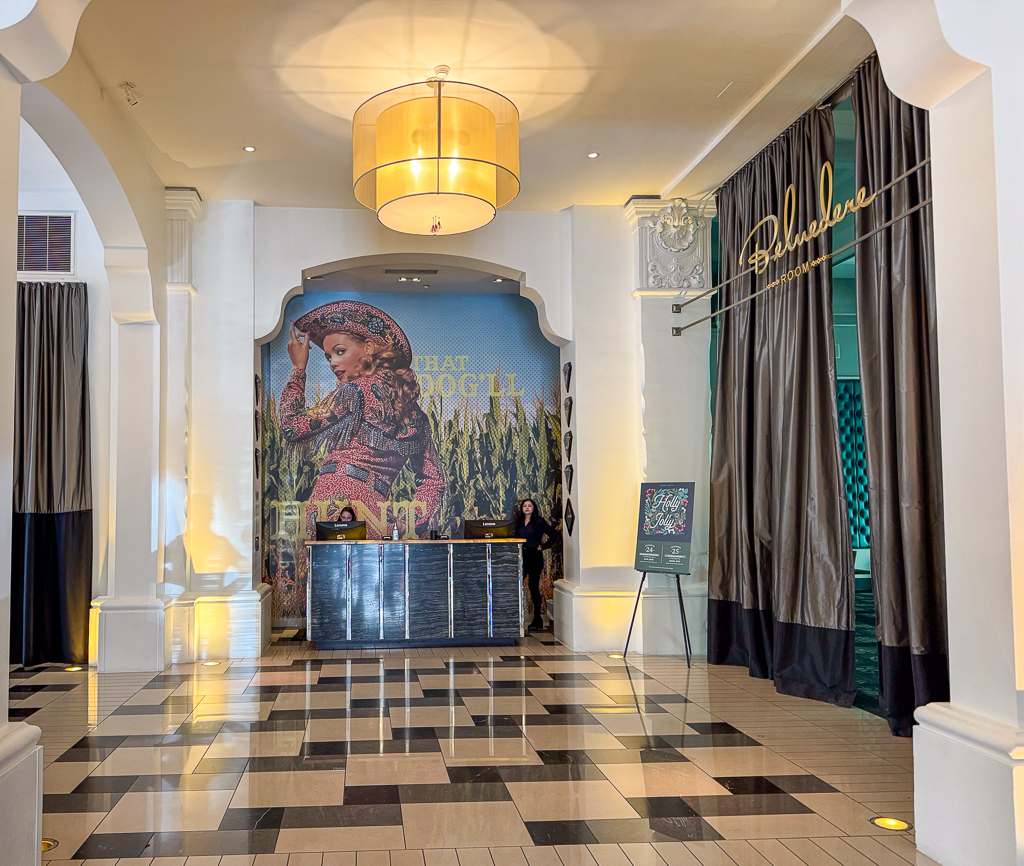
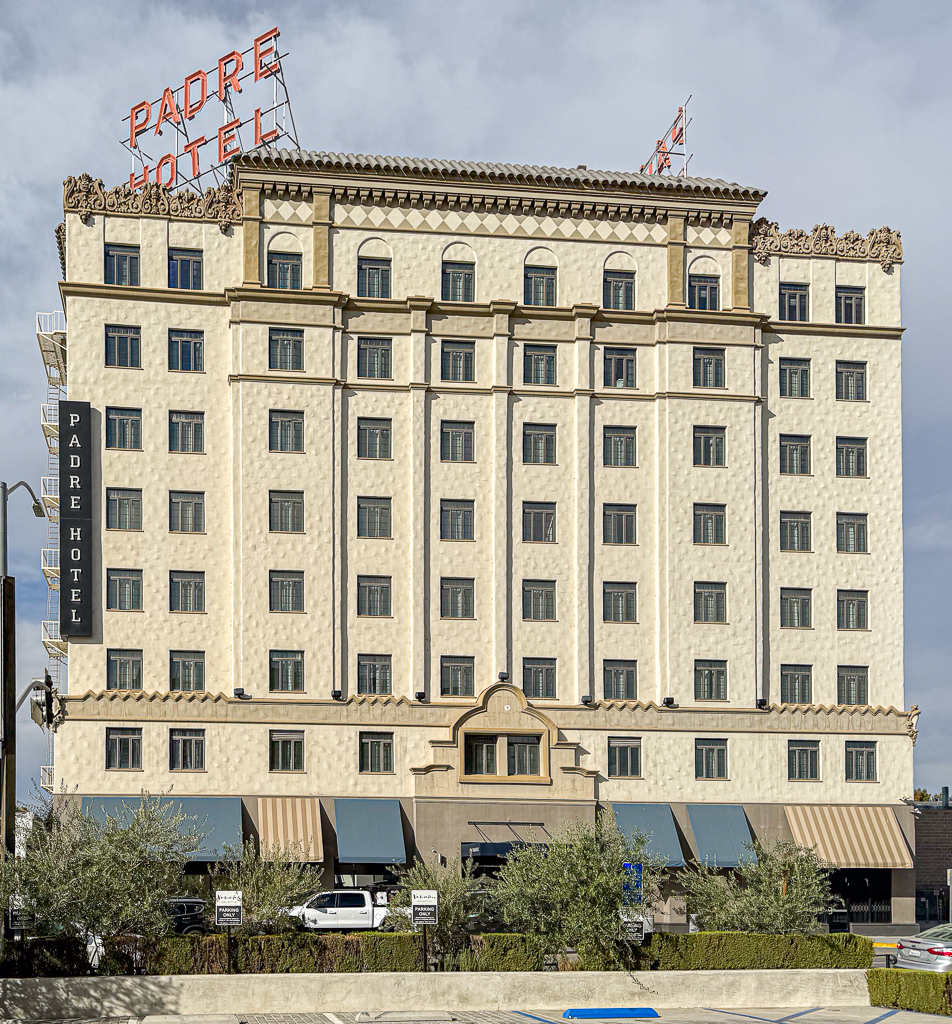
We walked back to the Marriott, packed, and left Bakersfield. I’d planned to stop in Mojave to charge the car; even though it was just 60 miles away, we used up 30% of the battery getting there (climbing 4000 feet probably had something to do with that). The charging station was at the Comfort Inn next to the Mojave Air and Space Port.

We decided to eat before leaving Mojave and enjoyed a tasty (and inexpensive) lunch at Mojave Thai Cuisine. There were dozens of Tesla Superchargers there and at the adjacent restaurants and supermarket; I’m looking forward to being able to use them someday (Kia is moving to the “North American Charging Standard”, which is supposed to give Kia drivers access to the Tesla network in a couple of years).
We didn’t have to charge the car for the rest of the trip (170 miles) and we arrived at the Westin Desert Willows with about 35% left in the tank.
